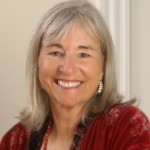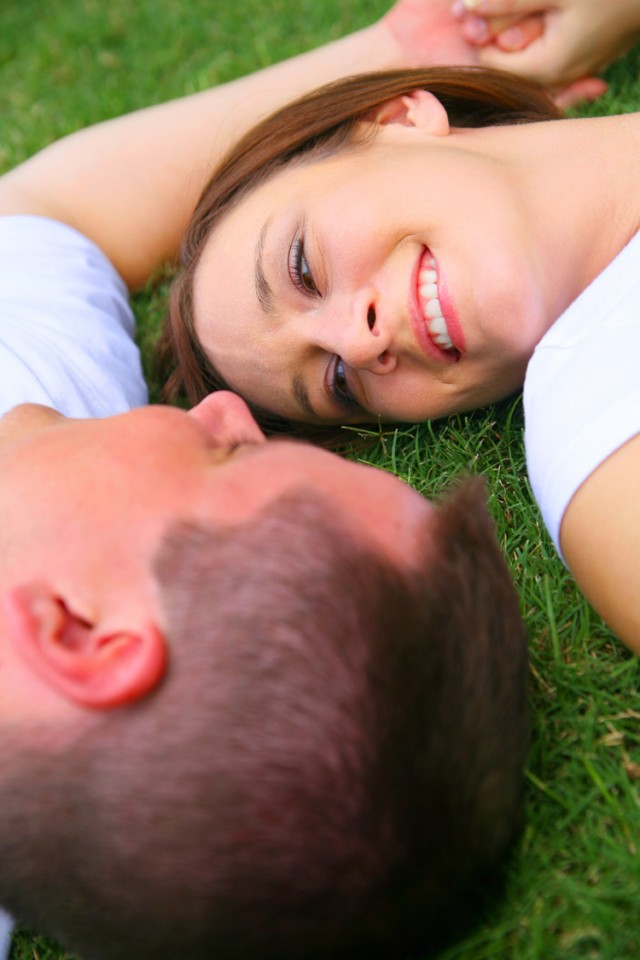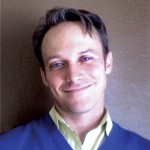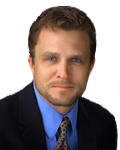HS Course Descriptions
- Home ›
- New Earth Institute Certificate Programs ›
- Human Sexuality Certificate ›
- HS Course Descriptions
Core Courses
| Sexual Attitudes and Sexual Development 20 CEC contact hours / 2 quarter units |
| This course exposes students to developmental sexuality from a biopsychosocial perspective. Sexual issues across the life span will be explored using visual art, reflective writing, reading, dialogue, and small group work. This course also uses the Sexual Attitudes Reassessment (SAR) to provide participants with opportunities to challenge, examine, and reshape current sexual beliefs and attitudes. The SAR is a process-oriented, structured group experience designed to promote participants’ awareness of their attitudes and values related to sexuality, and to assist them in understanding how these attitudes and values affect them professionally and personally. Topics to be explored include sexual myths; sexual orientation; gender identity; alternative relationships; BDSM; kink; disability; and aging. This self-exploration fosters improved communication skills while allowing participants to become increasingly comfortable with a wide variety of sexual attitudes, behaviors, practices, and subcultures. The expressive arts therapies are used in this course to illuminate self-understanding and ground self-discovery. |
| Participation in a Sexual Attitude Reassessment Seminar (SAR) is required for certification as an AASECT sex therapist, educator, or counselor. This course meets the AASECT SAR requirement as well as 10 hours toward Human Sexuality Education. |
| Clinical Skills: Theorizing and Thinking about Sexual Issues in Psychotherapy 20 CEC contact hours/ 2 quarter units |
| This course introduces participants to clinical sexology, the interdisciplinary study of human sexual interests, behavior, and function. Participants will explore a diverse set of theories/models used to understand and respond to sexual issues. This includes assessment and diagnosis of psychosexual disorders, as well as methods of attending to and theorizing about sexual issues as part of a larger case formulation. In this course participants will have the opportunity to use the expressive therapies to explore their own erotic blueprint and core erotic themes, as well as dilemmas related to desire, relational discrepancies, and internal conflicts. This course will rely heavily on dyadic exploration and case consultation. |
| This course meets the AASECT requirement for 20 hours of Sex Therapy Education. |
| Clinical Skills: Working with Sexual Issues in Psychotherapy 20 CEC contact hours/ 2 quarter units |
| This course introduces participants to models for working with sexual issues. Participants will become acquainted with a variety of theoretical approaches to help clients explore their sexual lives, to develop a more satisfying sensual and erotic life, and to understand the personal, social, and cultural influences that shape their sexual attitudes, desires, and behaviors. This course helps practitioner’s develop a listening perspective and therapeutic attitude that cultivates a safe, curious, non-shaming exploration of sexual issues. This includes ways of listening to what clients say (content) and how they communicate (process) about the intimate details of their inner lives. Heavy emphasis will be placed on attending to the nuances of language, breathing and body language, dream images and fantasies, as well as erotic transference-countertransference and ethics. |
| This course meets the AASECT requirement for 20 hours of Sex Therapy Education. |
Elective Courses
| Integrating Sexuality and Spirituality: The Heart & Soul of Sex 20 CEC contact hours/ 2 quarter units |
| This course brings emotional and spiritual consciousness to the practice of sex therapy. It offers an innovative model for exploring a wide range of situations and dynamics, and provides opportunities for case consultation about desire, pleasure, dysfunction, and more. Its structure encourages personal awareness along with clinical questions. In this course, participants will explore an expanded view of sexual desire and intimacy that includes physical sensation, emotional passion, cognitive discernment, and spiritual longings for connection with self, partner, and the universe. |
| This course meets the AASECT requirement for 20 hours of Sex Therapy Education. |
Gina Ogden, Ph.D., LMFT full bio
| Erotic Intelligence & Pleasure Literacy 20 CEC contact hours/ 2 quarter units |
| Because much traditional (abstinence-only) sex education is associated with managing risk (pregnancy prevention, HIV) and discouraging sexual expression in young adulthood, there are often gaps in knowledge with regard to erotic intelligence. This course places particular emphasis on helping clients develop a more conscious, less shame-laden relationship to pleasure. Participants will refine their skills in articulating their own desires and improving communication with sexual partners. This course will help clinicians, not only, enhance their own sexual intelligence, but also learn about anatomy, physiology, sex toys, and role-playing – and sex-positive ways to impart this kind of information to clients. |
| This course meets the AASECT requirement for 20 hours of Sex Therapy Education. |
| Touch & Embodiment 20 CEC contact hours / 2 quarter units |
| This course expands participants’ awareness and sensation through breath, movement, touch, and communication. Drawing from body-based therapies like somatic experiencing, hakomi, and mindfulness-based practices, participants’ will learn methods for becoming more attuned to physical sensation and thus more fully embodied. Participants’ will be encouraged to explore messages from the body and develop a deeper relationshipto pleasure and sensation through body-based awareness. |
| This course meets the AASECT requirement for 20 hours of Sex Therapy Education. |
| Eros in Myths, Dreams, and Fantasies 20 CEC contact hours / 2 quarter units |
| The Greek word Eros dates back to the 14th century and was originally used to describe romantic love or desire. In the classical and literary world, Eros is often associated with madness, longing, and ecstasy. For Plato, Eros was neither human nor divine, but was the mechanism that propelled human beings toward wholeness. In Freudian psychoanalytic thought, Eros is associated solely with sexual energy and the generative parts of ourselves. This course takes an in-depth look at Eros, focusing on the ways in which the erotic shows itself in myth, dreams, and fantasies. Participants will be given the opportunity to explore own relationship to Eros through visual art and written word.taught by Jason Holley, full bio |
| This course meets the AASECT requirement for 20 hours of Human Sexuality Education. |
| Pornography and the Question of Sex Addiction 20 CEC contact hours / 2 quarter units |
| This course explores diagnostic categories and encourages critical thinking related to diagnosing, assessing, and labeling sexual problems. Students will have an opportunity to explore the ways in which diagnostic language is historically and socio-politically situated. Topics to be covered include sex addiction and compulsivity, paraphilias, pornography addiction and consumption, as well as sexual dysfunction as defined by the DSM-5.
taught bio David Ley, full bio |
| This course meets the AASECT requirement for 20 hours of Human Sexuality Education. |
| Innocence Betrayed: Understanding Sexual Abuse and Trauma 20 CEC contact hours / 2 quarter units |
| Mental health professionals working with traumatized individuals need to understand both the emotional/behavioral manifestations of trauma as well as the physical impact of psychological trauma. This course takes an in-depth look at sexual trauma – focusing on childhood sexual abuse, sexual assault in adulthood, and covert incest. Heavy emphasis is placed on the clinical phenomena associated with sexual trauma such as dissociation, the impact of trauma on transference and countertransference dynamics, the erotization of fear, the compulsion of self-abuse, as well as the neurobiology of trauma. |
| This course meets the AASECT requirement for 20 hours of Human Sexuality Education. |
| Anatomy of Couples Work: Clinical Skills for Relationship Therapy 20 CEC contact hours / 2 quarter units |
| Drawing from the work of John Gottman, Mary Main, Phil Ringstrom, Stephen Mitchell and Ester Perel, this clinically oriented course introduces participants to current theory and practice for working with couples. Particular emphasis is placed on the actualization of self experience in the context of relationship, developing a capacity for mutual recognition & empathic attunement, and the capacity to renegotiate the relationship based on a fuller, more conscious understanding of each partner’s individual subjectivity. Students are introduced to diverse ways of working with couples’ desire discrepancies, infidelities, and loss of interest. |
| This course meets the AASECT requirement for 20 hours of Human Sexuality Education. |
| Queer Sexualities: Desire and Identity20 CEC contact hours / 2 quarter units |
| Drawing from the work of Alfred Kinsey, Michael Foucault, Judith Butler, Ken Corbett, Jack Drescher and others this course involves an in-depth exploration of the ways in which social and psychological factors shape sexuality. Emphasis will be placed on exploring the psychological, social, and therapeutic experiences of GBLTQ clients, couples, and families. Sexual orientation, sexual identity development, heterosexism, shame and homophobia will be addressed, as well as ways for clinicians to respond their clients with sensitively, openness and awareness. |
| This course meets the AASECT requirement for 20 hours of Human Sexuality Education. |
| Variations on Coupledom: From Celibate to Single to Polyamorous 20 CEC contact hours /2 quarter units |
| This course introduces clinicians to a range of relationship possibilities. It begins by exploring celibacy, single life and dating, and expands into an in-depth discussion of alternative relationships. Participants will be introduced to contemporary dating practices and ways of helping clients negotiate the internal and external demands associated with living a single life in search of a relationship. Clinicians will also be exposed to the culture of open or polyamorous relationships – which can take the form of (but is not limited to) primary and/or secondary relationships, long distance relationships, quad bonds, triads, and swingers. Clinicians will be introduced to ways of assisting clients in managing pressures, jealousy, the transition from monogamy, relationship imbalances, double standards & sharing time, as well as discrimination. |
| This course meets the AASECT requirement for 20 hours of Human Sexuality Education. |
 Southwestern College Santa Fe, NM
Southwestern College Santa Fe, NM




